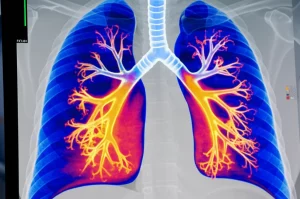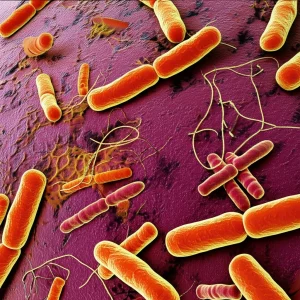Superbugs Strike Back: How Antibiotics Reshape Your Gut’s Microbial World
Hey there! Ever wondered what happens inside your gut after you finish a course of antibiotics? You know, those amazing medicines that zap away nasty infections? Well, it turns out the story is a bit more complicated than just clearing out the bad guys. We’ve been diving deep into the microscopic world living inside us, and what we found is pretty wild. It’s all about how some bacteria, the ones that have gotten really good at shrugging off antibiotics, actually take over and totally change the landscape of your gut community once the antibiotic storm passes.
Meet the Gut’s Post-Antibiotic Power Players
For years, we’ve known that antibiotics are being used a lot – in medicine, in food production – and this has led to a big problem: bacteria becoming resistant. We’ve been tracking these resistant genes (the “resistome”) everywhere, from hospitals to sewage and even in people. But understanding *which* bacteria carry these genes and *what they actually do* inside us, especially after antibiotics, has been a bit of a mystery.
So, we decided to get up close and personal with the gut microbiome of someone who took antibiotics. Using some seriously cool tech to reconstruct bacterial genomes (think of it like piecing together the DNA blueprints of individual bacteria), we could look at things at a super-fine level – down to the specific strains! And guess what we found? Not all resistant bacteria are created equal. We spotted two main types:
- Extensively Acquired Antimicrobial-Resistant Bacteria (EARB): These guys are the heavyweights. They’ve picked up *loads* of resistance genes.
- Sporadically Acquired Antimicrobial-Resistant Bacteria (SARB): These have some resistance, but not nearly as much as the EARB.
It quickly became clear that the EARB weren’t just sitting around; they were doing something significant.
The EARB Advantage: More Than Just Resistance
What makes EARB so special? For starters, they showed resistance to a *much broader* range of drugs compared to SARB. While SARB might be resistant to, say, tetracycline or fluoroquinolone (even if those weren’t the antibiotics used in the treatment!), EARB were often resistant to the very drugs that were given, like carbapenem and aminoglycoside. It’s like they had a full suit of armor against the antibiotic attack.
But it wasn’t just about resistance genes. We dug into *what* these bacteria were functionally capable of doing. Using fancy analysis tools (looking at their gene functions via databases like KEGG), we found that EARB are equipped with some pretty neat tricks. They seem really good at:
- Breaking down stuff in their environment, including potentially breaking down drug compounds like antibiotics (think “xenobiotic degradation”).
- Making their own antibiotic-like substances (like bacteriocins) which could help them compete with other bacteria.
- Having metabolic pathways that give them an edge, like processing amino acids and sugars efficiently, and doing anaerobic respiration.
Think of it this way: while the antibiotics are wiping out the susceptible bacteria, the EARB are not only surviving because of their resistance, but they’re also actively working to make their environment more favorable and even producing weapons against competitors. SARB, on the other hand, seemed more focused on things like breaking down complex sugars (polysaccharides), which is more typical of many gut commensals. This functional difference is key.

Reshaping the Gut Community Landscape
So, with this resistance and functional advantage, what happens to the gut community after antibiotics? It gets restructured, big time. We saw that groups like *Enterobacteriaceae*, which include many EARB, and *Veillonellaceae* (another group sometimes linked to inflammation) significantly increased right after antibiotic treatment (around day 4 and 8). Meanwhile, friendly commensals like *Bacteroidetes* took a hit and decreased.
To really understand the impact, we came up with something called a “community power score.” This score helps us figure out how functionally important a specific bacterium is within the whole community at a given time. It turns out, EARB consistently had the *highest* community power scores. This means they weren’t just present; they were functionally dominant, playing a major role in what the community could *do*.
We also looked at who was hanging out with whom (co-abundance). EARB tended to be found alongside other bacteria that are sometimes considered pathobionts (bacteria that can cause problems under certain conditions), while the non-EARB with high functional importance were more often found with typical friendly commensals. Crucially, EARB showed a *negative* correlation with overall species richness. This suggests that as EARB numbers go up, the total number of different bacterial species in the gut tends to go down. It’s like they’re outcompeting and pushing others out.
Strains on the Move: Tracking Individual Superbugs
Getting down to the strain level was fascinating. We looked closely at EARB *E. coli* strains from the same individuals over time. Sometimes, strains from the same person days apart were virtually identical, suggesting they were just endogenous residents surviving the antibiotic hit. But in other cases, we saw distinct strains present at different time points, or even *two* different strains present at once, with one becoming dominant later.
This “strain sweep,” where one strain takes over, highlights the dynamic nature of the gut microbiome under pressure. It suggests that even within the same bacterial species, specific strains might have slightly different resistance profiles or functional capabilities that give them a winning edge when antibiotics are around. It confirms that these resistant powerhouses are often already living inside us, waiting for their moment.

Beyond the Gut: Finding EARB in Other Places
Is this just a weird gut thing? We checked other groups of people who’ve had a lot of antibiotic exposure. We looked at bacteria isolated from recurrent urinary tract infections (RUTI), and metagenomic data from patients with liver cirrhosis and preterm infants. And guess what? We found EARB in these populations too!
The EARB in these other groups had similar resistance profiles and also showed high community power scores, just like the ones in the healthy adults we studied. Interestingly, preterm infants seemed particularly susceptible to EARB colonization, possibly because their microbiomes are less established. We even found some identical EARB *E. coli* strains shared across different cohorts and even different countries, suggesting some of these superbugs are spreading widely.

What Does This All Mean?
So, what’s the takeaway from this deep dive?

First off, antibiotics don’t just hit the reset button on your gut; they create a situation where highly resistant bacteria, the EARB, can really thrive and become dominant. These aren’t just passive survivors; they have specific functional tools that help them outcompete others.
Second, this happens at the strain level. It’s not just about a species being resistant, but *which specific strain* is present and how it adapts. Tracking these strain dynamics is super important.
Finally, these EARB are out there, not just in healthy adults after antibiotics, but in vulnerable populations too, and some strains are even spreading globally.
Understanding these EARB – their resistance, their functions, how they interact with other bacteria, and how specific strains behave – is absolutely crucial if we want to get a handle on the growing problem of antibiotic resistance. It means we need more targeted strategies, maybe focusing on these specific resistant powerhouses, rather than just broad approaches. There’s still a lot to learn, especially about how these EARB might help susceptible bacteria survive or how different antibiotics select for different types of EARB, but this study gives us a much clearer picture of the post-antibiotic gut landscape and the dominant players within it.
Source: Springer







